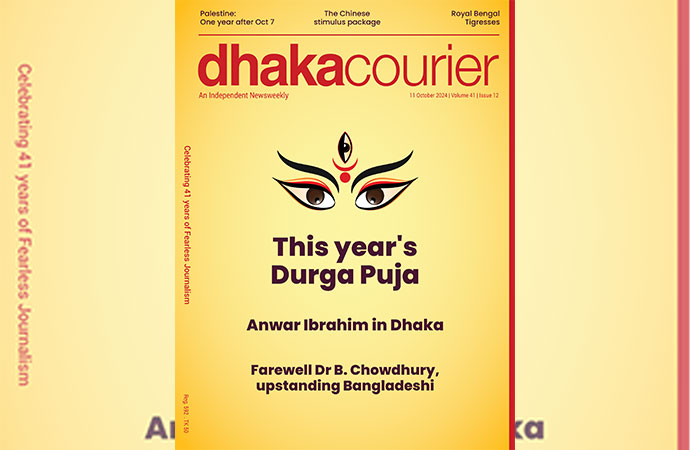Essays

Zahir Raihan
During the pre-liberation era, there was a god-gifted genius in this suppressed land called Bangladesh, which was then known as East Pakistan. He fought with his pen, camera and cinematic vision for the freedom of the motherland- and through this courageous journey he successfully revealed the true color of the Pakistani rulers. If he was still alive, the films of Bangladesh would certainly get the highest possible recognition to the worldwide audiences, than it gets now. 19th August was the 84th birth anniversary of country's legendary filmmaker and writer, Zahir Raihan.
Born as Mohammad Zahirullah on 19th August, 1935 in the village Majupur of Feni district- Zahir had studied in Calcutta Alia Madrasah, where his father was a professor. It was the Partition of Bengal in 1947 which moved his family back to his ancestral village. From Amirabad High School, Zahir successfully passed the Matriculation examination in 1950. Even at that young age, he already had started his literary works covering variant topics. That year, he started working as a journalist in Juger Alo. Although he joined medical college and eventually got himself dropped out after completing his ISSC Examination from Dhaka College in 1953, he later obtained his Bachelor of Arts (Hon) degree in Bangla from the University of Dhaka in 1958.
During this timeline, Zahir was attracted and later became very much involved in Communist movement against the Pakistani rulers. There was an incident happened regarding his involvement in Communism, which gave him the identity through which he became aesthetically immortal. At that time, Communist Party was banned in Pakistan and the leaders of the party went underground, so as a young comrade he worked as a courier to carry letters and messages for them from one place to another. Because of his trustworthy service, he was given the name Raihan from underground leaders and thus his original name Mohammad Zahirullah was changed to Zahir Raihan.
The Language Movement of 1952 was the first major event that shook the whole unified Pakistan at its core, and Zahir became wholeheartedly active with it. He was one of the first ten students to break the 144 regulation and marched a procession on 21st February, 1952- and was also present at the historical meeting of Amtala on February 21, 1952. He later metaphorically portrayed the incidents of this movement in his monumental film, Jeebon Theke Neya (Taken from events of life). He was a lifelong patriot, and never compromised portraying the truth and beauty of patriotism in his creations.
At this point, he also started his professional career as a journalist. After working in the Juger Alo, he worked in newspapers namely Khapchhara, Jantrik, and Cinema. He also worked as the editor of Probaho in 1956. His first collection of short stories, titled Suryagrahan (Solar Eclipse), was published in 1955. He was one of the initiators in publishing the English Weekly Express in 1970- and was also associated with some other journals of literature. However, within his short-spanned career as a writer, he was successful to write and tell some of the most prolific and true-to-life stories ever published in Bangladeshi literature through his books such as Shesh Bikeler Meye (A Girl in the Late-Afternoon), Arek Phalgun (Another Spring), Trishna (Thirst), Borof Gola Nodi (River that emerged of Melted Ice) and most notably, Hajar Bochhor Dhore (Since Thousand Years).
Although he became a journalist and writer, he always aspired to be a filmmaker. So he went back to Calcutta and got admitted into Pramatesh Burua Memorial Photography School in 1952 to learn photography. Zahir Raihan's career in the movie started with Jago Huye Savera (Wake Up, it's Time) in 1957, where he worked as an Assistant Director. As an AD, he also worked with Salahuddin in the film Je Nodi Morupothay (The River about to Get Drenched). Prominent director Ehtesham then trusted Zahir as his wingman in his movie A Desh Tomar Amar (This is My Country as yours), as he was not only the Assistant Director but also wrote the title song of the movie. His first Directorial venture was Kokhono Asheni (Never Emerged) which was released in 1961. However, being an underprivileged filmmaker of a suppressed state, he made two revolutionary attempts as director- Sangam (Lovemaking), which was entire Pakistan's first ever colored film- and completed his first cinemascope Urdu movie Bahana (Excuse), both in the year of 1964.
He was gradually becoming more and more successful during that timeline as a shining director with back to back hits such as Sonar Kajol (Golden Kajal- 1962, jointly directed with Kolim Sharafi), Kancher Deyal (Walls of Glasses- 1963), Behula (1966), Anowara (1966), Agun Niye Khela (Playing with Fire- 1967) etc. He launched several prominent artists through his movies, most notably Nayak Raj Razzak and Babita- and worked frequently with prominent actor-director Amzad Hossain and Khan Ataur Rahman. By that time, the political situation of the nation was getting chaotic more than ever, and Zahir was continuously feeling the zeal to break every shackle imposed by the Pakistani Rulers. During the historical mass-movement of 1969, he felt the urgency of making a film based on the incidents of 1952's Language Movement and 69's Gono Ovvyutthan together, thus created his legendary film Jeebon Theke Neya in 1970.
Till date, the unique parallel storytelling technique of Jeebon Theke Neya mesmerizes everyone- as Zahir brilliantly portrayed the complete political scenario of that chaotic time by metaphorically portraying the everyday life of a classic middle-class joint family. So many things happened in this one particular film- the inclusion of Rabindranath Tagore's song Amar Sonar Bangla which later became the National Anthem and that too used in a time when Tagore's creations were strictly banned in Pakistan's culture; the inclusion of Nazrul's monumental song of rebel titled Karar Oi Louho Kopat; the traditional morning procession of 21st February which portrayed for the first time ever in celluloid through this film and most importantly, the National Flag of Bangladesh was first properly portrayed with utmost pride, patriotism and respect in this movie. All these aspects eventually led so many people to believe that this one particular movie ignited the fire and patriotic zeal among people to step toe to toe against the Pakistani rulers, thus start the Liberation War which led to the independence of Bangladesh. Jeebon Theke Neya has been described as an example of 'National Cinema', using discrete local traditions to build a representation of the Bangladeshi national identity. It is considered a milestone for Bangladeshi cinema and a classic.
Zahir Raihan achieved massive critical acclaim for Jeeban Theke Neya, not only from the general people of both the Bengals but also from Bengali film maestros and legendary filmmakers such as Satyajit Ray, Mrinal Sen and Ritwik Ghatak- and donated all the money he earned from the movie's screening to the aid of freedom fighters despite of being in financial crisis. He started making an English film titled Let There Be Light, which he could not finish because of the break out of the war of liberation. After 25th March of 1971, he went to Calcutta and produced a documentary film Stop Genocide highlighting the massacre done by the Pakistani Army. This film created a sensation all over the world. A true lover of cinema by his soul, he eventually found both his wives from the Bengali world of cinema- actress Sumita Devi (married 1961) with whom he had two sons Bipul and Anol Raihan, two of the successful drama directors of the country- and another popular actress Suchanda (married 1968), with two other sons as well- Opu and Topu Raihan.
Although Bangladeshi patriots successfully snatched the freedom and independence from Pakistan in the war, the defeated party wanted to paralyze the country in the long run by killing of its intellectuals. Because of that cowardly move, several intellectuals went on missing within December-January of 71 and 72, respectively. That included eminent writer Shahidullah Kaiser, the elder brother of Zahir who went missing from his residence at the University of Dhaka. Within days, on 30 December 1971, someone informed Zahir about an address, somewhere at Mirpur which was still heavily dominated by Pakistani and Bihari people, where he might find his brother. Accordingly, Zahir left home to get his brother back. He never returned though, and according to some witness- he was shot and killed in an encounter.
Zahir Raihan lived only 36 years, but he managed to achieve eternal glory for Bangladeshi cinema through his majestic creations. While this mourning cannot be overlooked that the country lost its most talented, iconic and genius filmmaker in exchange of its independence- Bangladesh got the opportunity to call Zahir Raihan of its own who fought with his cinema like a gladiator; and that is such a remarkable achievement for this nation.

























Leave a Comment
Recent Posts
FIFA President to Join Youth F ...
FIFA President Gianni Infantino has said he will join the youth festiv ...
Chief Adviser Yunus engages wi ...
Chief Adviser Prof Muhammad Yunus on Tuesday had brief interactions se ...
Chinese investors interested in Bangladesh’s power, ..
Dr Yunus expands Council of Advisers with 3 new face ..
Bangladesh receives $655 million in remittances in 9 ..
COP29: Chief Adviser Yunus scheduled to leave for Az ..